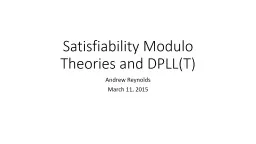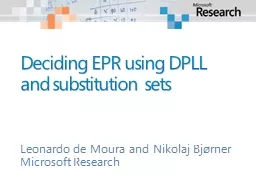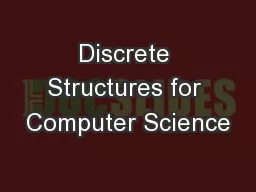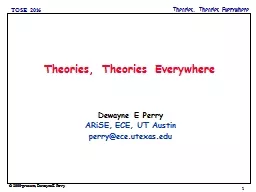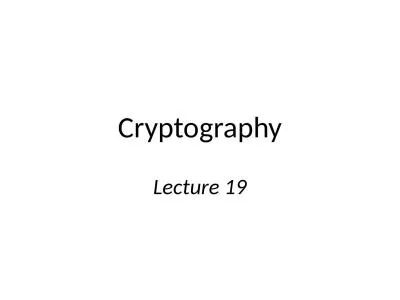PPT-Satisfiability Modulo Theories and DPLL(T)
Author : alida-meadow | Published Date : 2016-07-08
Andrew Reynolds March 18 2015 Overview SAT Satisfiability for Propositional Logic A B C D B Does there exist truth values for A B C D that make this formula
Presentation Embed Code
Download Presentation
Download Presentation The PPT/PDF document "Satisfiability Modulo Theories and DPLL(..." is the property of its rightful owner. Permission is granted to download and print the materials on this website for personal, non-commercial use only, and to display it on your personal computer provided you do not modify the materials and that you retain all copyright notices contained in the materials. By downloading content from our website, you accept the terms of this agreement.
Satisfiability Modulo Theories and DPLL(T): Transcript
Download Rules Of Document
"Satisfiability Modulo Theories and DPLL(T)"The content belongs to its owner. You may download and print it for personal use, without modification, and keep all copyright notices. By downloading, you agree to these terms.
Related Documents

